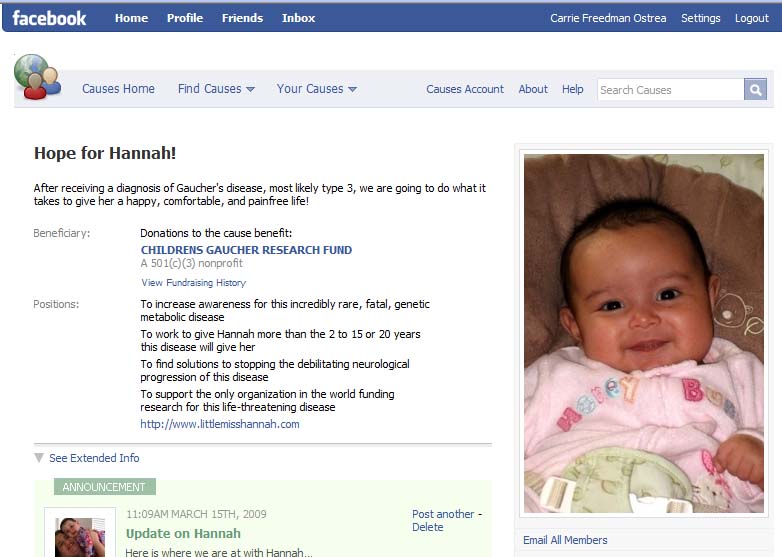Tomorrow morning, Hannah has another Cerezyme treatment so we will be spending the day down at TCH.
We are also possibly getting the results of Hannah’s DNA sequencing that should give us some insight into whether we are dealing with type 2 (fast progression of the disease) or type 3 (slower progression of the disease). Granted, how many years longer type 3 would give us, we have no idea.
I’m scared to death that it is going to be type 2, and that we would mean we only likely have another year or so with Hannah. I know that because she presented at birth (which is very rare for GD anyway), this would most likely give us a type 2 diagnosis. But the fact that her symptoms at this point are not as severe as “they should be,” gives us hope that she does have type 3.
Maybe it is better not knowing? Because if it is type 2, I don’t know how I am going to handle the news. Seriously, I don’t. I am petrified right now just even thinking about it. Type 2 doesn’t give us much of a chance to fight for a treatment for her. I hate saying this, but type 2 is basically a death sentence. Oh god, it kills me to even think about that. I can’t believe I even just said it outloud.
It just has to be type 3. I need time with her. There is a reason she is here, and it is not to be taken away from me like this without a chance to fight. I would even prefer an “inconclusive” answer, I think, than a type 2.
Argh, I wish I could just turn my brain off and stop thinking about this!!


Latest Comments